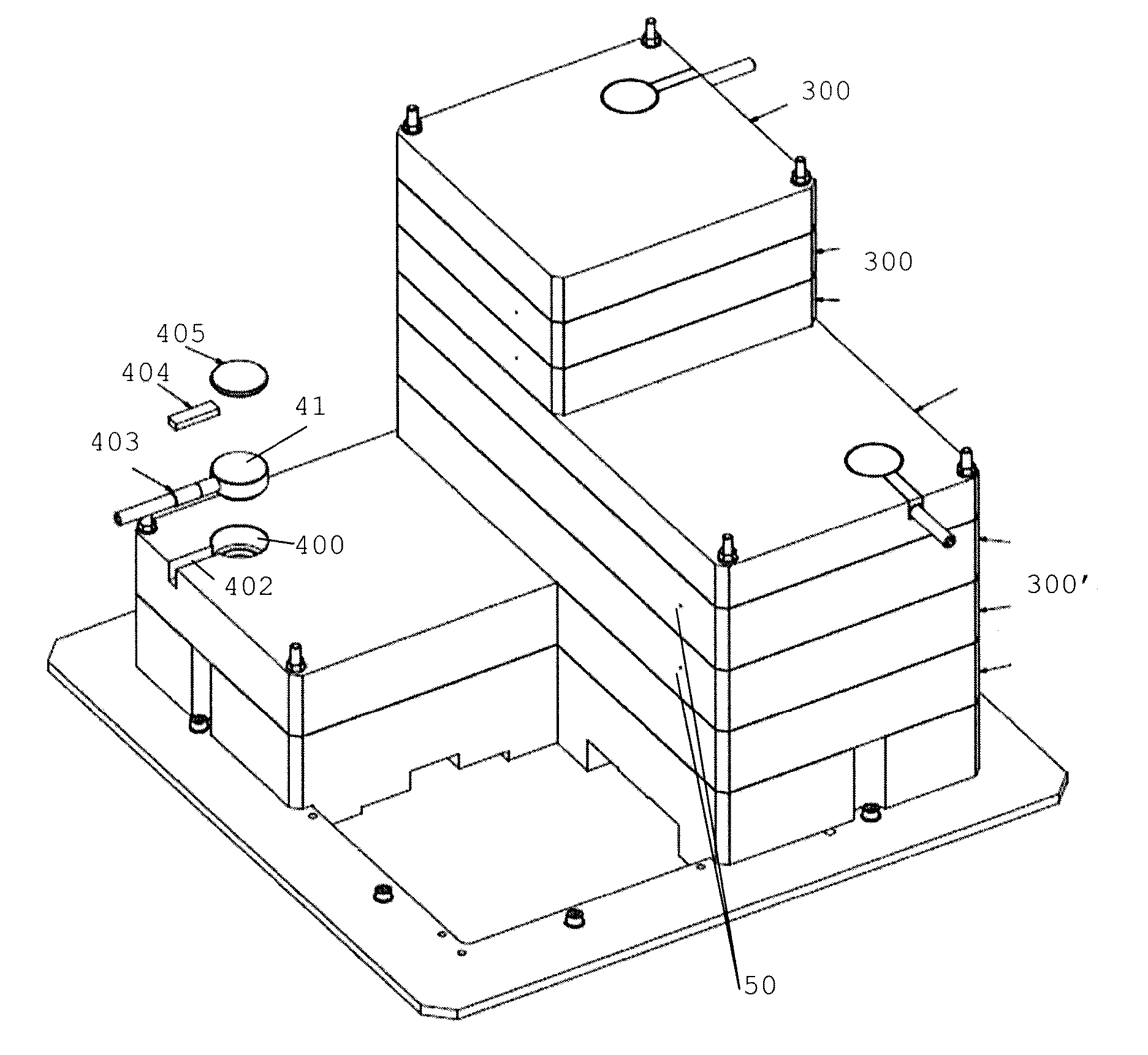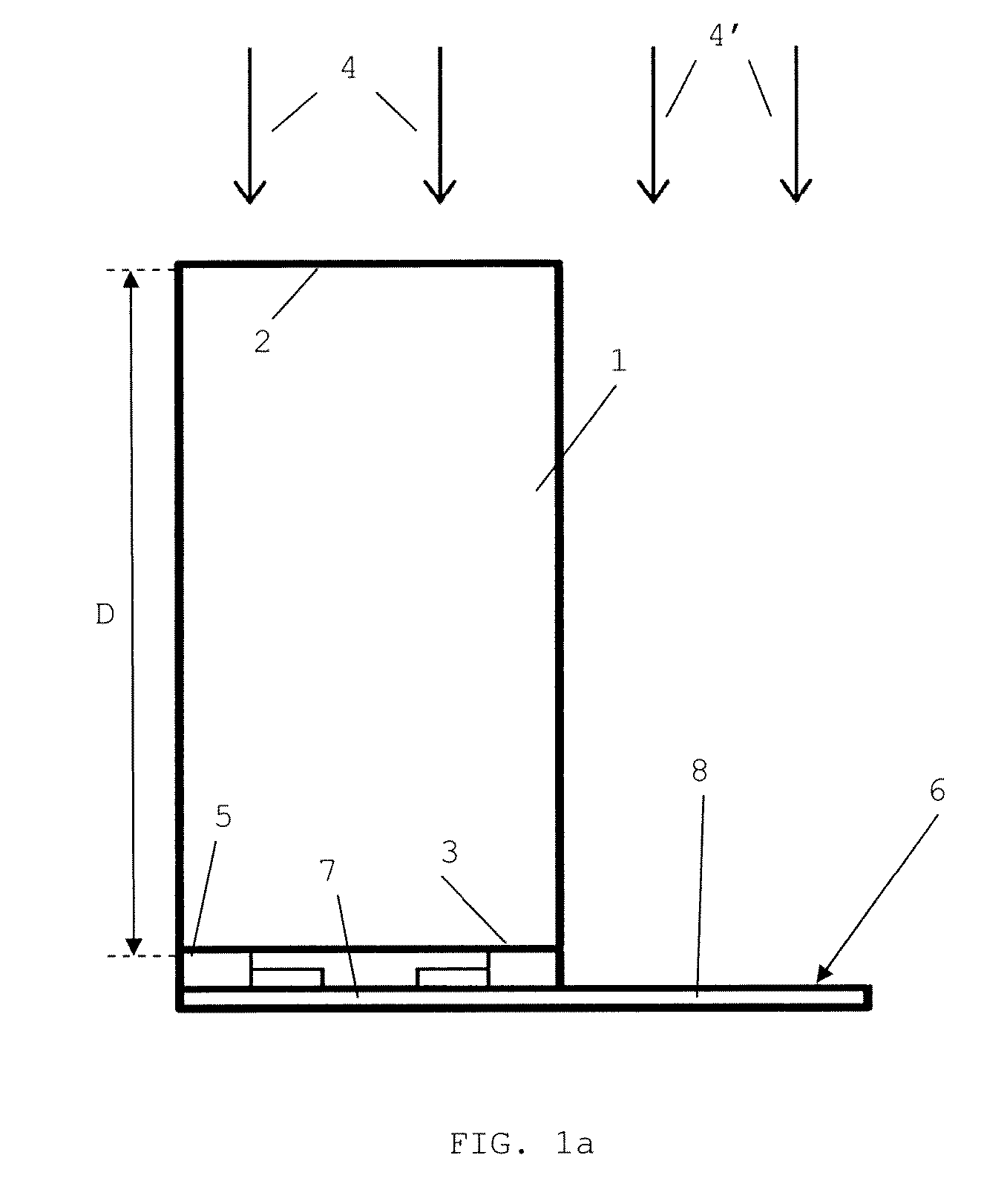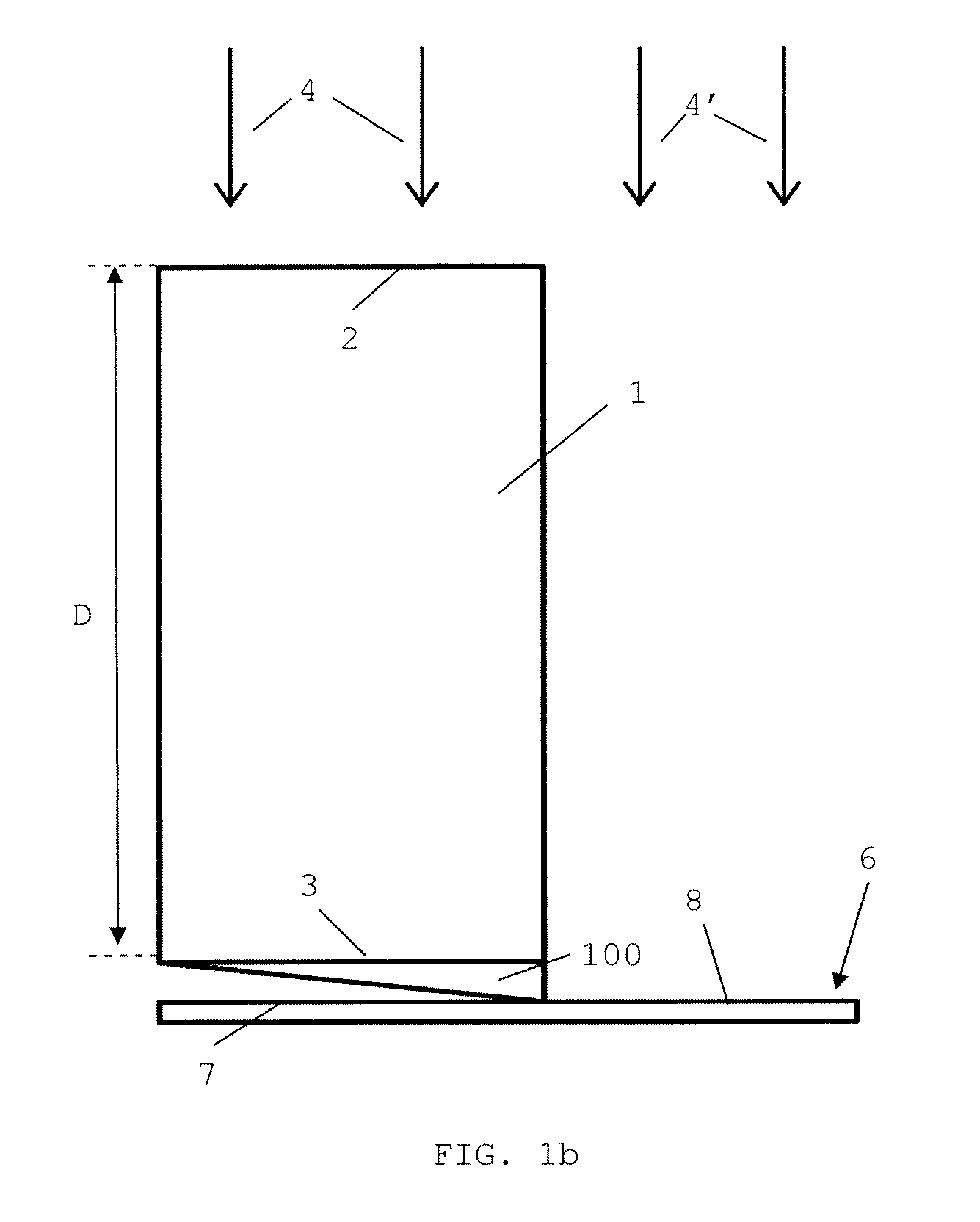Apparatus and method for hadron beam verification
a technology of apparatus and method, applied in the field of charged hadron therapy, can solve the problems of reducing the efficiency of treatment facilities in terms of number of treatments, and the device is not suitable for measuring the beam range of particle beams
- Summary
- Abstract
- Description
- Claims
- Application Information
AI Technical Summary
Benefits of technology
Problems solved by technology
Method used
Image
Examples
first embodiment
[0057]The following description refers to a device for proton beam verification. The device is however suitable for verification of any other type of hadron beam (ion beam e.g.). FIG. 1 is a schematic representation of a device according to the invention. It comprises three basic components:[0058]a main degrader element 1: this is a volume of material with known proton beam energy degrading characteristics. The main degrader element has mutually parallel surfaces 2 and 3. The main degrader element is suitable for being positioned with respect to a pencil beam irradiation installation so that pencil beams may be aimed at the parallel surfaces 2 and 3 (i.e. the beam passes through the degrader element from one surface to the other; possibly the beam is perpendicular to both surfaces). The main degrader element 1 has a predefined thickness D. Preferably the degrader element 1 is a rectangular block of PMMA or another suitable material with a known water-equivalent thickness. Alternativ...
second embodiment
[0063] the multiple thickness degrader element is a wedge degrader element 100, as illustrated in FIG. 1b. The wedge element has a continuously changing thickness from one side to the other. The wedge element is therefore another example of the multiple thickness degrader element referred to in the appended claims. In the wedge element, the degrader portions referred to in the claims are formed by cross-sections of different thickness.
[0064]The main degrader element 1 has a thickness D that is designed with respect to a pre-defined proton beam energy. For this energy the predicted maximum of the Bragg peak (based on the beam energy and degrader material characteristics) is situated approximately at the end plane of the main degrader 1, and preferably downstream of said end plane (seen in the direction of the beam). When the multiple thickness element 5 or the wedge element 100 is placed after the main degrader element, preferably in contact with said element, i.e. forming an extensi...
PUM
 Login to View More
Login to View More Abstract
Description
Claims
Application Information
 Login to View More
Login to View More - R&D
- Intellectual Property
- Life Sciences
- Materials
- Tech Scout
- Unparalleled Data Quality
- Higher Quality Content
- 60% Fewer Hallucinations
Browse by: Latest US Patents, China's latest patents, Technical Efficacy Thesaurus, Application Domain, Technology Topic, Popular Technical Reports.
© 2025 PatSnap. All rights reserved.Legal|Privacy policy|Modern Slavery Act Transparency Statement|Sitemap|About US| Contact US: help@patsnap.com



